Le rivoluzionarie opere di Marcel Duchamp: un viaggio nell’arte concettuale
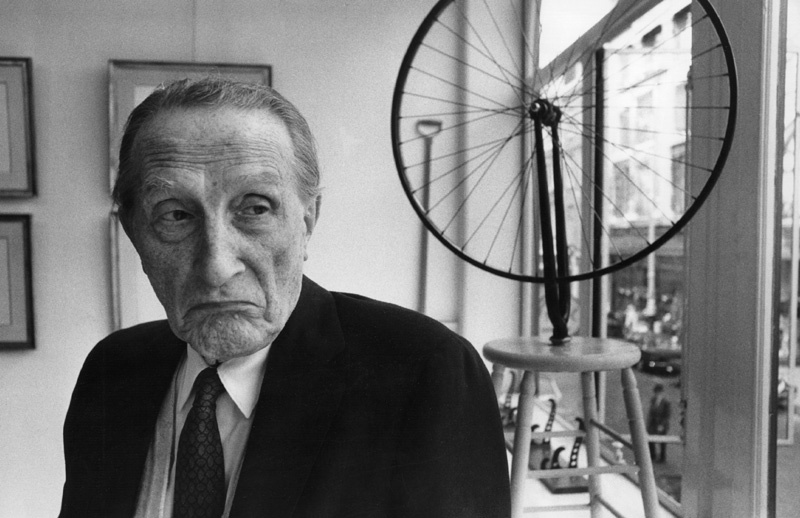
Conosci i grandi capolavori di uno dei grandi maestri del Novecento, ovvero le opere di Marcel Duchamp? In questo articolo, ti porterò alla scoperta di alcune delle sue opere più rivoluzionarie, scoprendo come ha trasformato oggetti comuni in capolavori di arte concettuale.
Attraverso la sua straordinaria creatività e la capacità di rompere gli schemi tradizionali, Duchamp ha lasciato un’impronta indelebile nell’arte moderna e contemporanea.
Le rivoluzionarie opere di Marcel Duchamp: un viaggio nell’arte concettuale
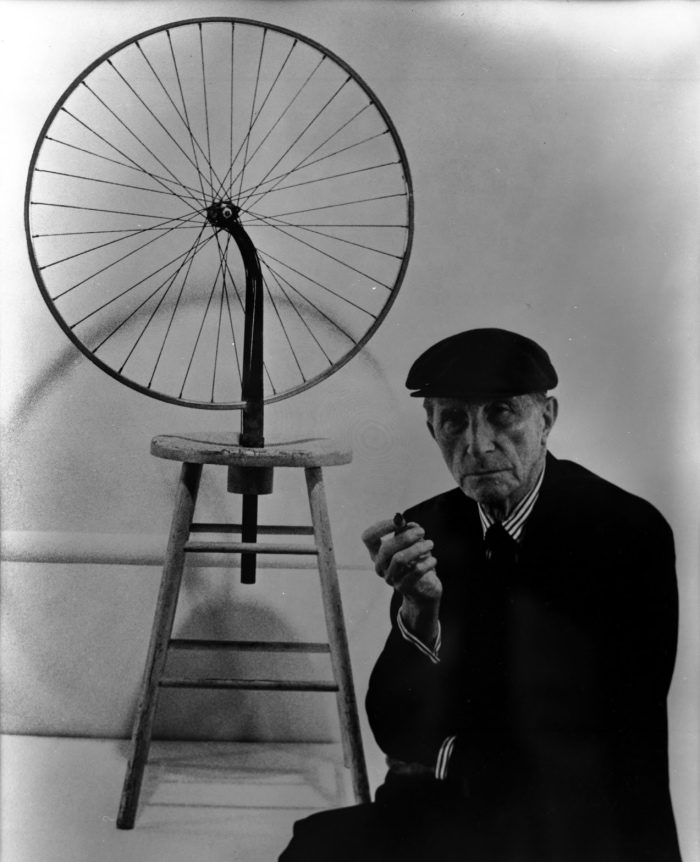
Image source: CycleMagazine.eu
RUOTA DI BICICLETTA (1913)
Un’opera che ha segnato l’inizio del movimento dei ready-made.
Duchamp prese una ruota da bicicletta e la montò su uno sgabello. Questa creazione fu una vera e propria sfida alle convenzioni artistiche del tempo, poiché trasformava un oggetto di uso quotidiano in un’opera d’arte astratta.
Con la Ruota di bicicletta, Duchamp lanciò un messaggio importante: l’arte non deve essere solo una rappresentazione visiva, ma può nascere da oggetti banali, elevandoli a una nuova dimensione estetica.
FONTANA (1917)
Una delle opere più iconiche e controverse di Duchamp. Consisteva in un semplice orinatoio ribaltato, firmato con lo pseudonimo “R. Mutt.”
Questo ready-made sfidava l’idea convenzionale dell’arte e la definizione di cosa potesse essere considerato un’opera d’arte. La Fontana di Duchamp suscitò indignazione e dibattiti, ma allo stesso tempo aprì nuove prospettive sul concetto di creatività e autorità artistica. Duchamp ha dimostrato che l’atto di scegliere un oggetto comune e dichiararlo opera d’arte è in sé un atto artistico.
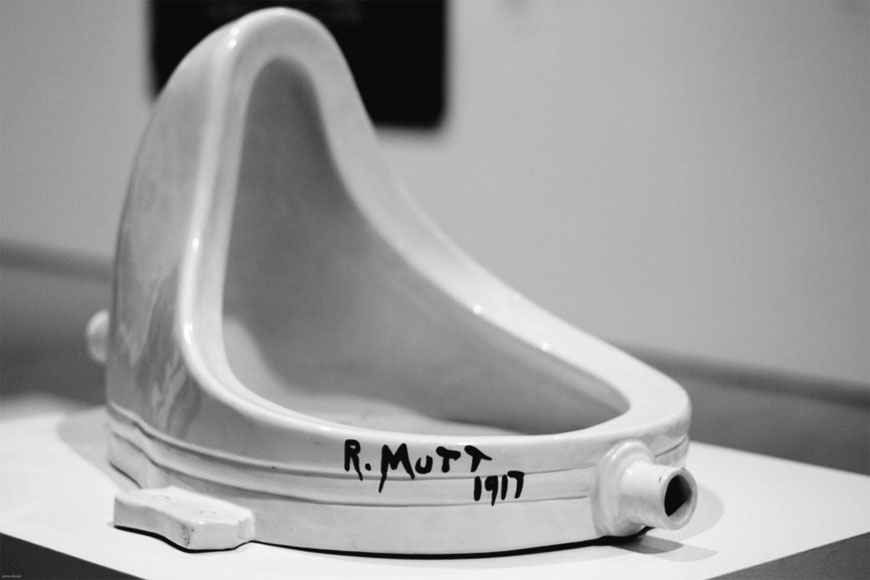
La Fontana di Marcel Duchamp.
L.H.O.O.Q. (1919)
Un’opera ironica e dissacrante in cui Duchamp ha preso una riproduzione della celebre Gioconda di Leonardo da Vinci e ha disegnato baffi e una barba sulla figura. Il titolo L.H.O.O.Q. è un gioco di parole che, pronunciato in francese, suona come “Elle a chaud au cul,” ossia “Lei ha il sedere caldo.”
Questo ready-made ha ribaltato l’idea tradizionale del capolavoro, trasformandolo in una parodia e mettendo in discussione il concetto stesso di originalità e autorità nell’arte.
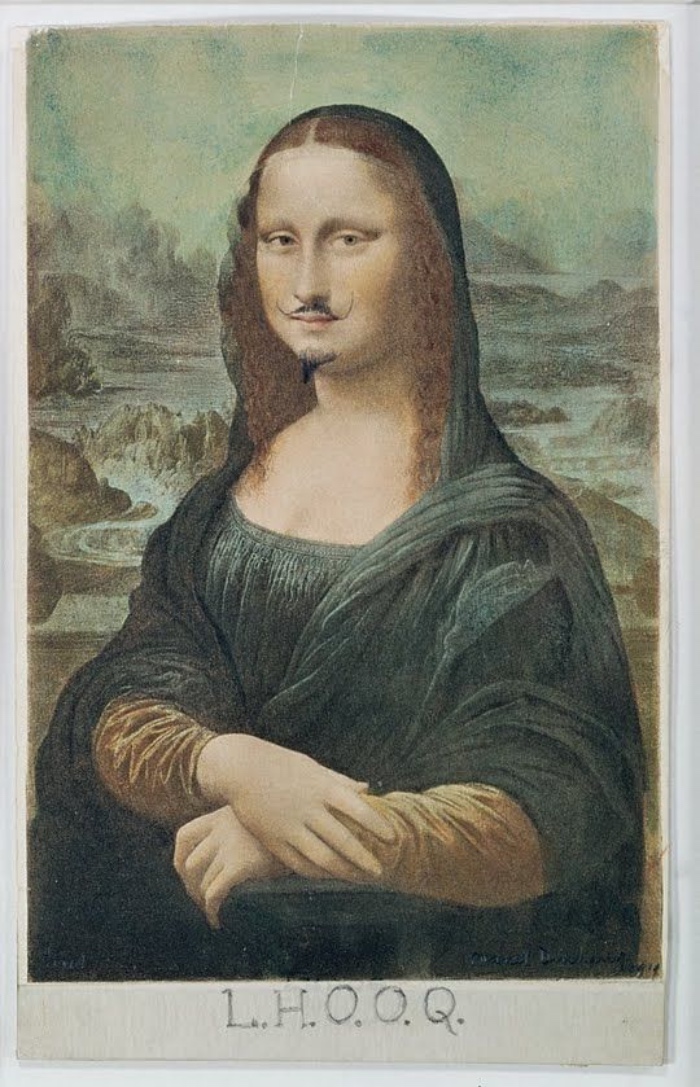
La Gioconda di Duchamp. Image source: https://it.wikipedia.org
BELLE HALEINE, EAU DE VOILETTE (1921)
Un esempio di come Duchamp si sia spinto oltre il mondo dei ready-made.
Qui, l’artista prese una bottiglia di profumo vuota e creò un’etichetta con il nome “Belle Haleine” (bella alito), seguita dalla frase “Eau de Voilette” (acqua di veletta).
L’opera parla dell’essenza dell’arte concettuale, in cui la scelta delle parole e dei nomi assume un ruolo fondamentale nel significato e nell’interpretazione dell’opera stessa.
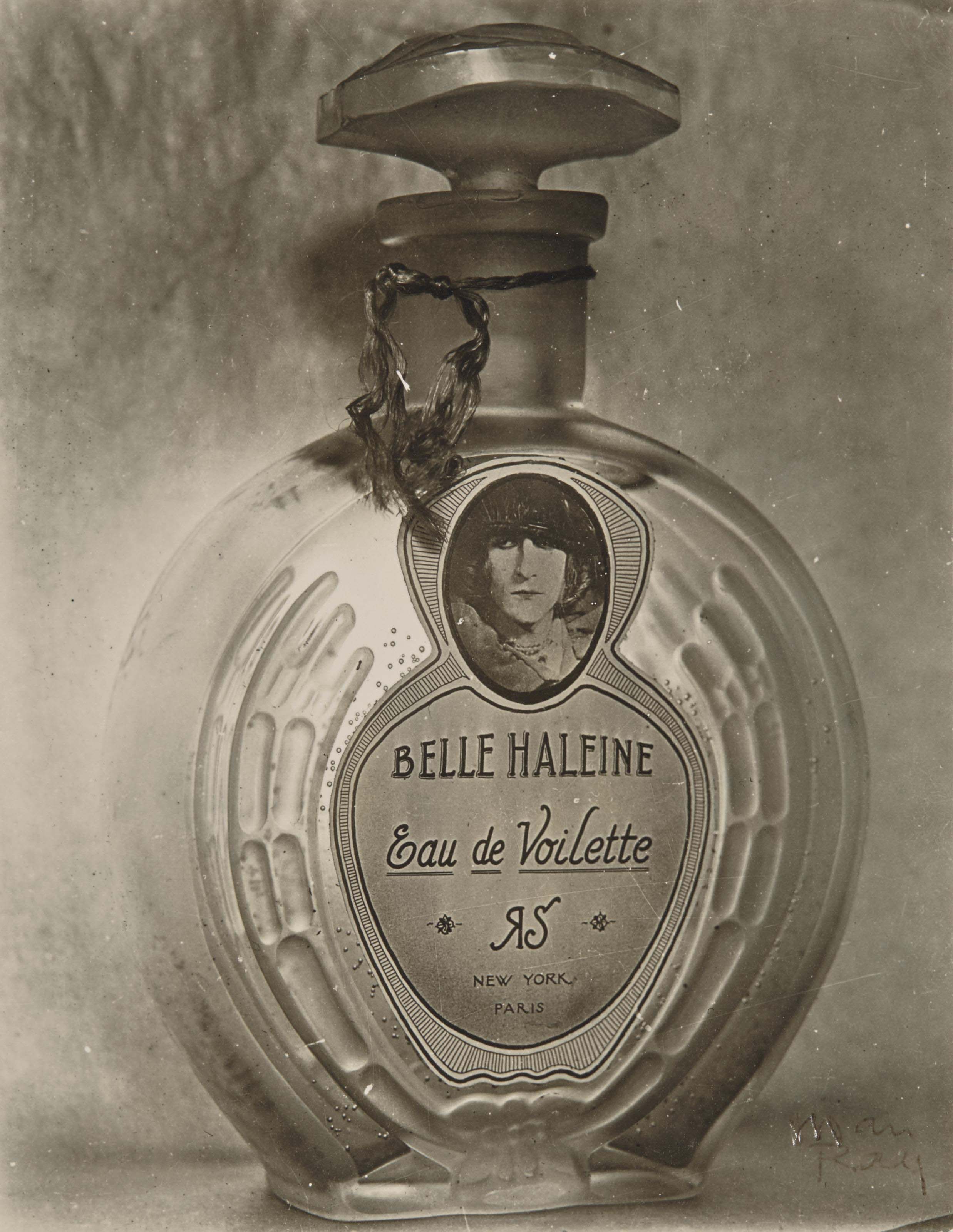
AIR DE PARIS (1919)
In questa opera, Duchamp mise insieme un sacchetto di plastica contenente semplicemente “l’aria di Parigi.” Questo ready-made è un esempio di come Duchamp abbia cercato di catturare concetti astratti e immateriali come l’aria e renderli oggetto d’arte.
Come con molte delle sue opere, Duchamp vuole spingere il pubblico a riflettere sulla natura stessa dell’arte e delle convenzioni che la circondano.
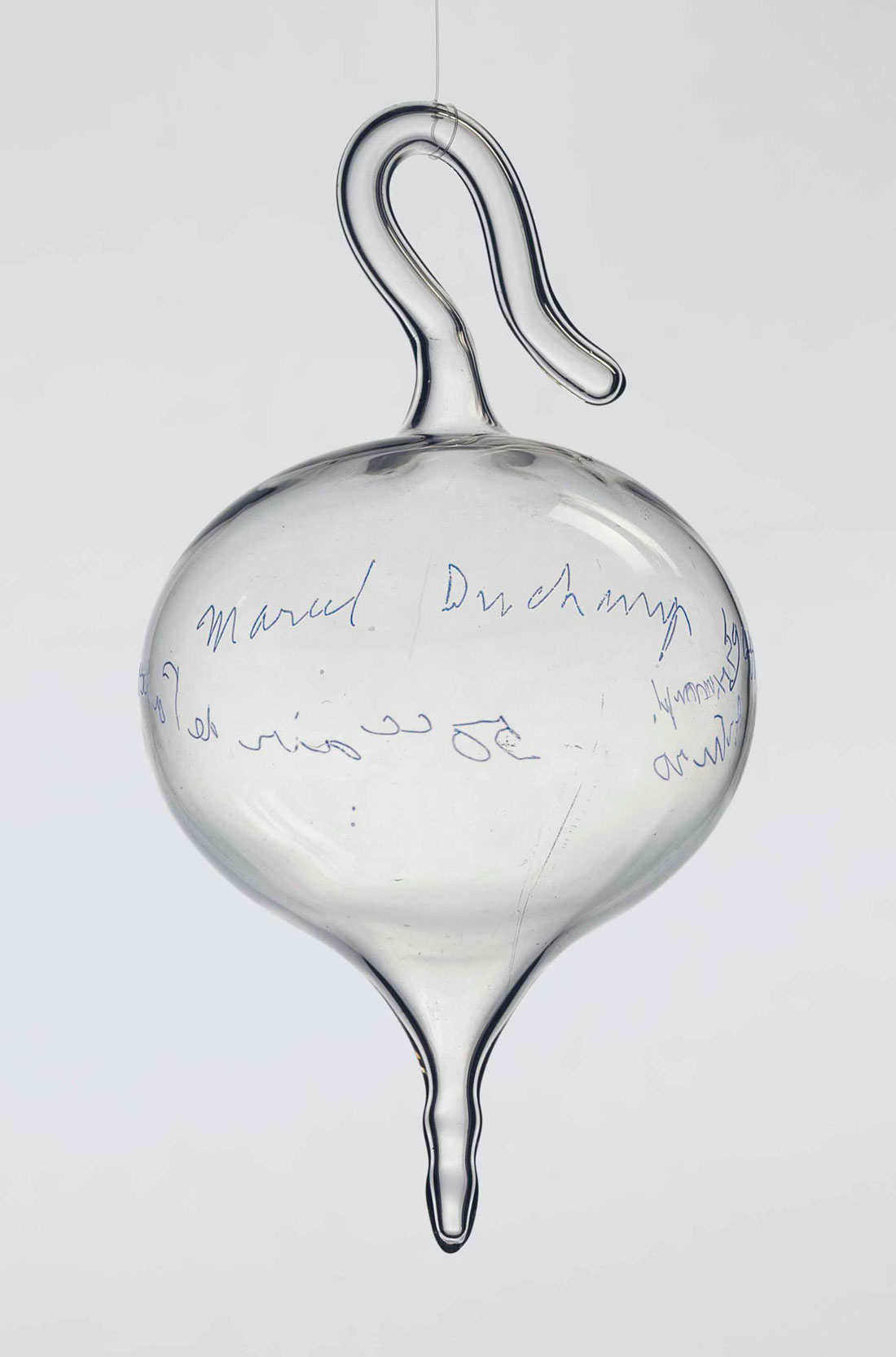
Marcel Duchamp è stato un visionario e un rivoluzionario dell’arte, il cui genio ha trasformato oggetti comuni in opere d’arte concettuali di grande significato.
Attraverso le sue opere, Duchamp ha messo in discussione l’idea stessa di arte e ha spianato la strada per gli artisti successivi a esplorare nuove frontiere creative.
La sua eredità continua a ispirare e a sfidare gli artisti moderni, invitandoli a guardare oltre la superficie delle cose e a trovare l’arte nelle sfide e nelle contraddizioni della vita stessa.
Seguimi su:
About me
In questo blog non ti spiego la storia dell’arte, ma racconto le storie di cui parla l’arte


